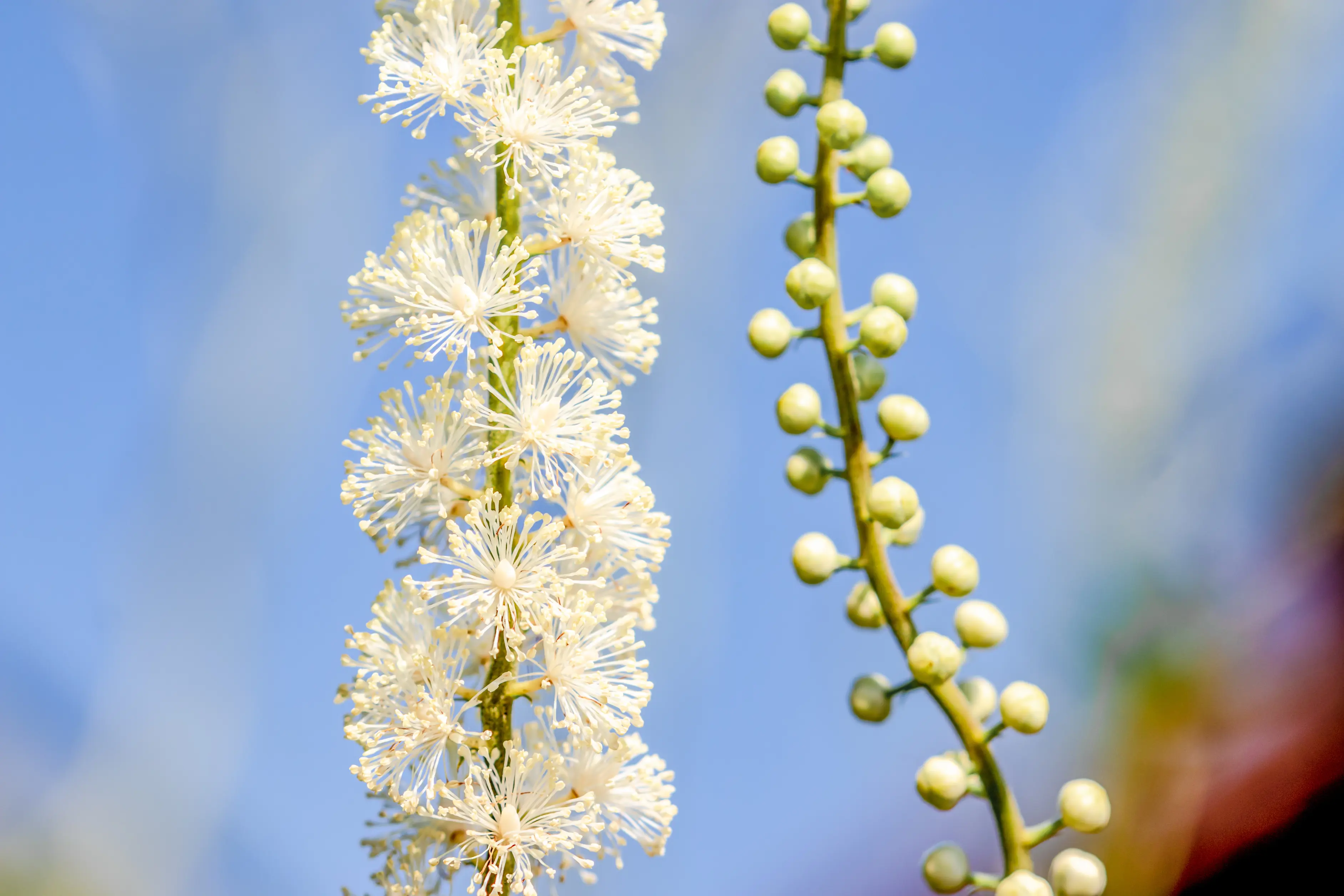
Phyto Story - Black cohosh (Cimicifuga racemosa)
Black cohosh was traditionally used by the Native Americans to treat menopausal symptoms. Recent studies have now confirmed its effectiveness for this purpose. This is why numerous women greatly valued this medicinal plant – as do women today. A woman’s hormonal balance changes during menopause, so its symptoms can become a major burden depending on their type and severity. While around a third of all menopausal women only notice obvious changes in their menstrual cycles, another third suffer from minor physical and/or emotional symptoms. The other third struggle with very noticeable symptoms like hot flushes. Find out here about where Cimicifuga racemosa is found, its appearance and its effects.
November 11, 2020
Where is Cimicifuga racemosa most commonly found?
Black cohosh (Cimicifuga racemosa or Actaea racemosa) is mainly found in North America. It grows in the wild in certain parts of Canada and in many US states. This very striking plant is mainly found in forested regions up to about 1,500 metres above sea level. It prefers semi-shady locations and nutrient-rich, moist soil.
As an ornamental plant, it is often also called “fairy candle” and is a very popular addition to home gardens because of its distinctive, pleasant-smelling flowers.
Appearance and Attributes
Cimicifuga is a resilient perennial. Its most striking characteristic is its size, which can exceed two metres under ideal growing conditions. Its rootstalk (rhizome) allows it to overwinter. The rhizome is part of the plant stem, which mainly survives underground during the winter. The roots sprout downward from the rhizome, while the stems sprout upwards and then form leaves, blooms, and later, fruits.
The stems and leaves are rather unremarkable before June. Long pinnate leaves up to twelve centimetres in length grow on the long leafstalks. Flowering begins in June and lasts until September. The plant forms long grape-shaped white inflorescences, which give the plant its name. As the perianth falls out when the flowers open, its appearance is characterized by countless stamens and styles. The inflorescence can grow to a length of sixty centimetres and is made up of many tiny individual flowers. The striking white inflorescences are what makes black cohosh such a popular garden plant. After flowering, the plant forms fruits – brown seed capsules that hang from the plant over the winter.
A medicinal plant with a long tradition
Black cohosh has many names that allude to its long tradition and history. “Cimicifuga” means, “driving away bugs”. A solution made from boiled black cohosh was sometimes used in the past to get rid of bed bugs, which is why Cimicifuga is also sometimes referred to as bugbane.
The natives of North America used the root of the medicinal plant to treat, among other things, gynaecological and labour pains as well as liver and kidney diseases. They also referred to the black cohosh plant as “rattlesnake herb” because of the solid seed capsules that hang from the dried plant in late autumn. When it is windy, they make a rattling sound similar to a rattlesnake. It is easy to imagine how this sound to this day could frighten people in regions where rattlesnakes are known to lurk.
Ingredients and Effects
The roots and rootstock are the parts of the Cimicifuga racemosa that are used. These contain triterpene glycosides (cimicifugoside, actein) as well as tannins and phenolcarboxylic acids. In the past, it was suspected that the triterpenes had an oestrogen-like effect. New studies have shown, however, that there is a different mechanism of action involved, which presumably involves the neurotransmitter system and is mediated by dopamine, serotonin and opioid receptors. This would also explain why no side effects, which occur with other oestrogen-like drugs, have been observed.
Applications and uses for Cimicifuga products
Menopause marks a transition between two life phases. It is a time associated with hormonal changes that have physical and emotional effects. Typical symptoms of these hormone fluctuations include hot flushes, sweating, sleep disorders, nervousness and mood swings. Treatments with herbal products can help women to get through this time more smoothly.
Cimicifuga for the treatment of menopausal symptoms
Cimicifuga extract is effective for treating menopausal symptoms. Studies have shown that the active agents in the medicinal plant Cimicifuga racemosa help relieve symptoms such as hot flushes, sweating and sleep disorders. They also reduce many of the emotional symptoms of menopause, including irritability, mood swings, nervousness and anxiety. The effect does not kick in immediately, so it is recommended that you take it for at least six weeks.
Please note: Herbal remedies may also have interactions and side effects. For this reason, please consult your doctor or pharmacist if you have any questions.
Topics
Filter blog posts by topic by clicking on the tags.




